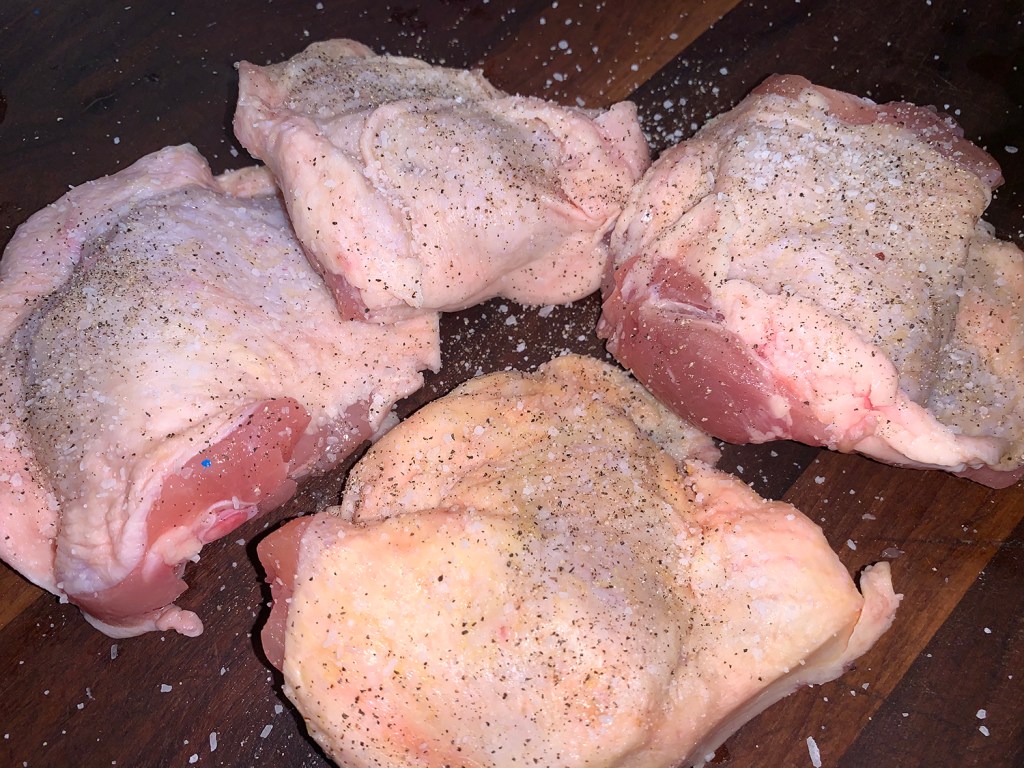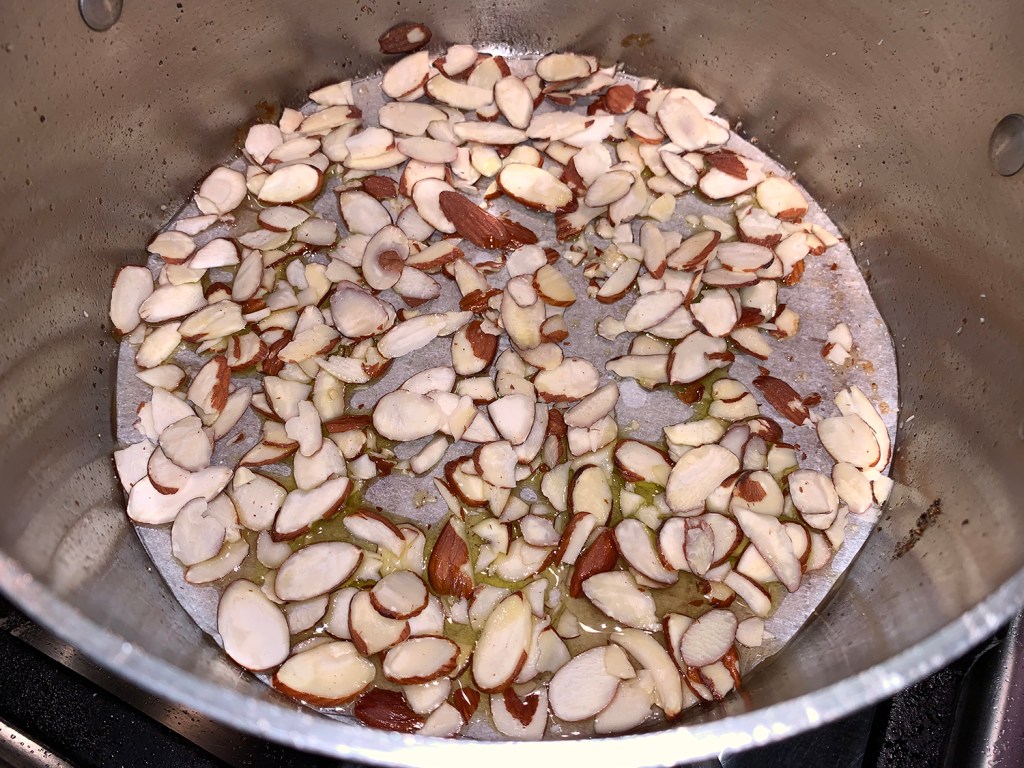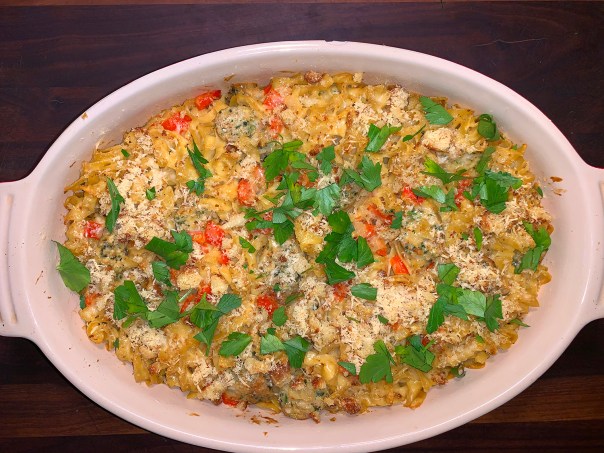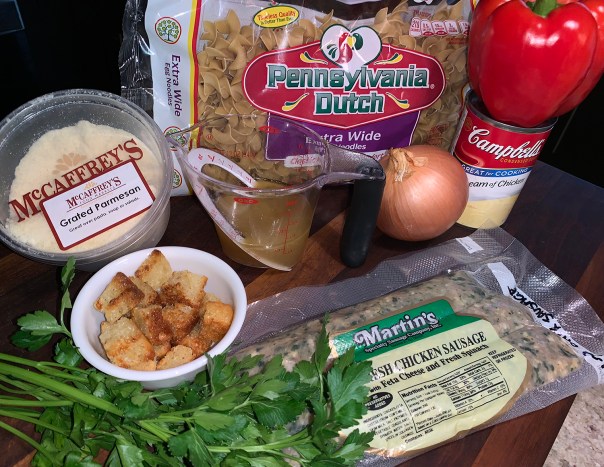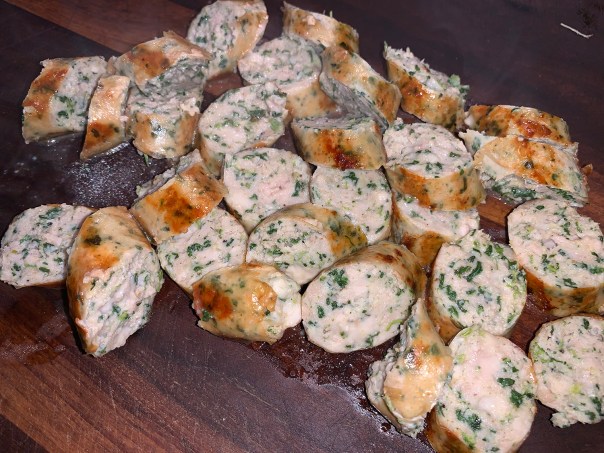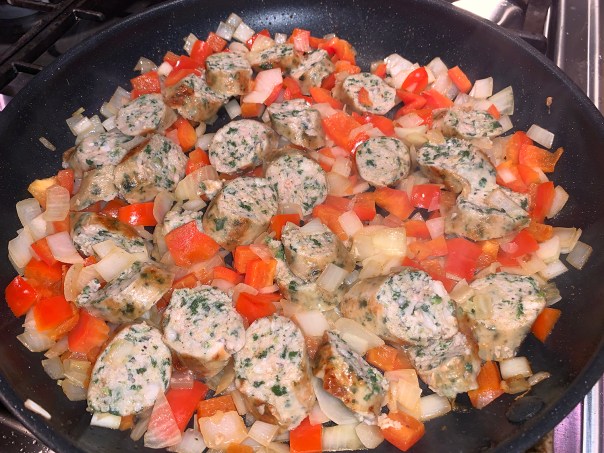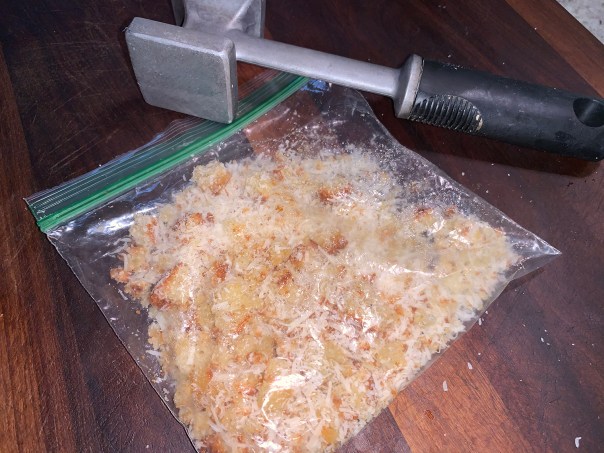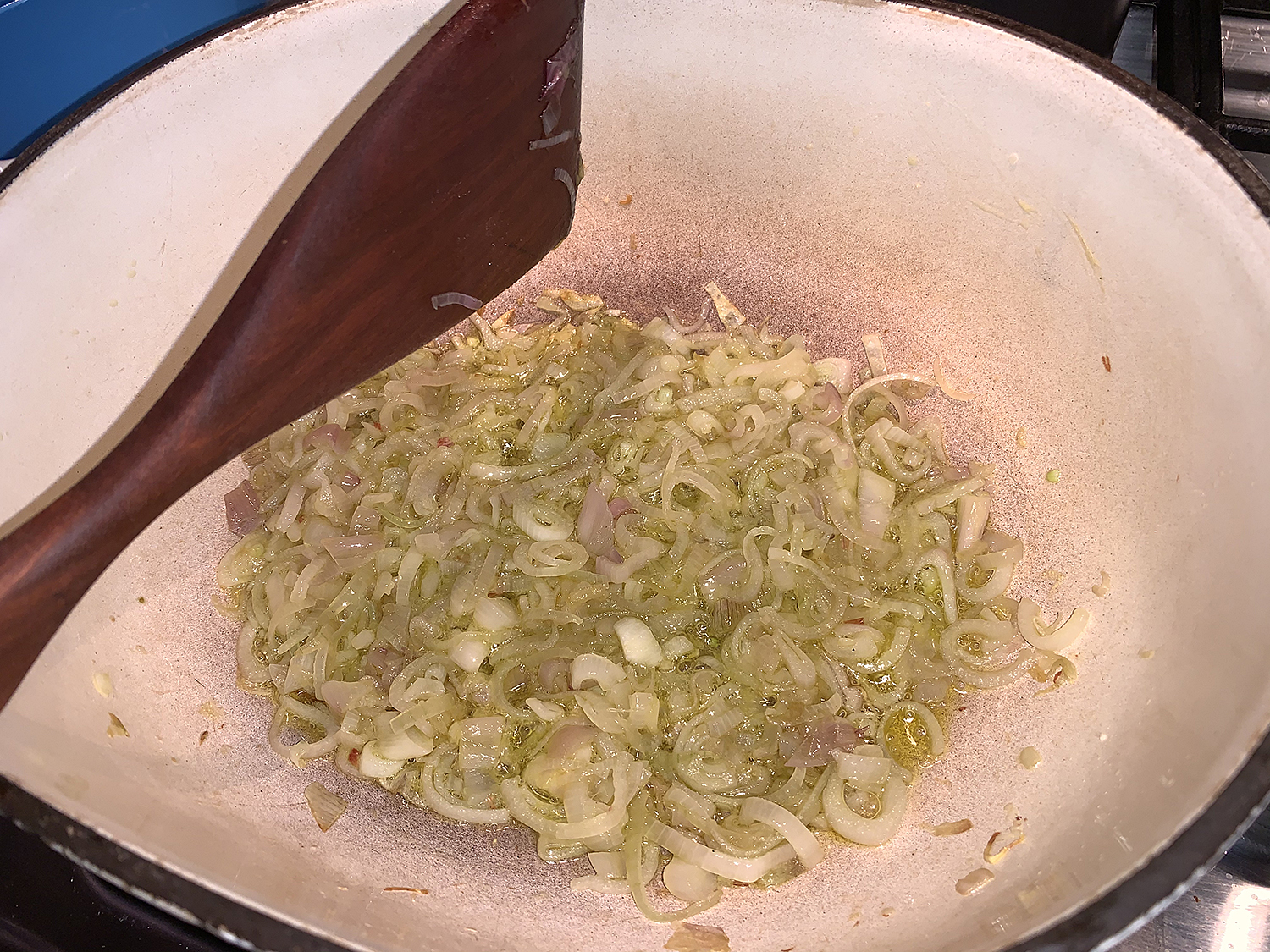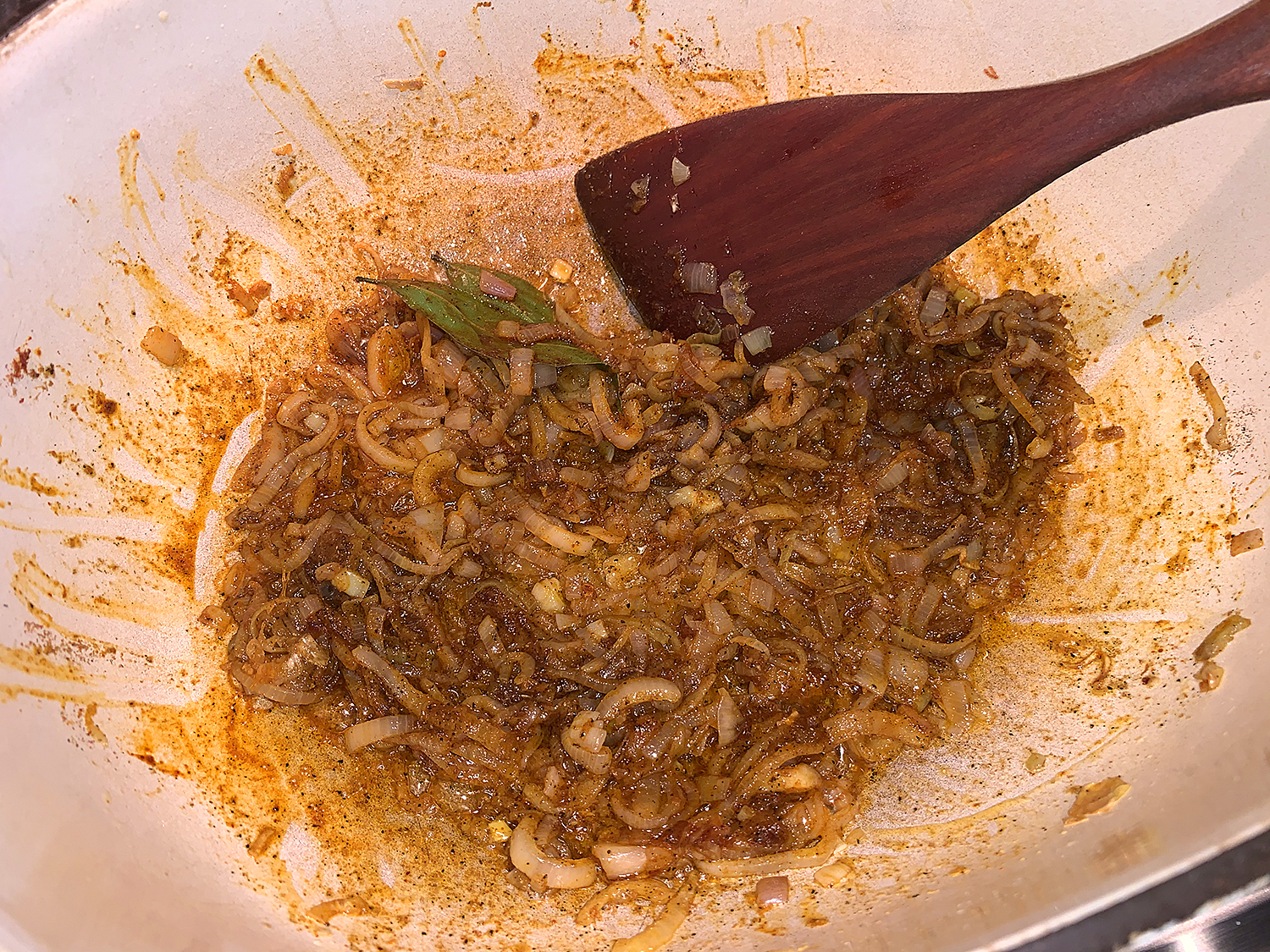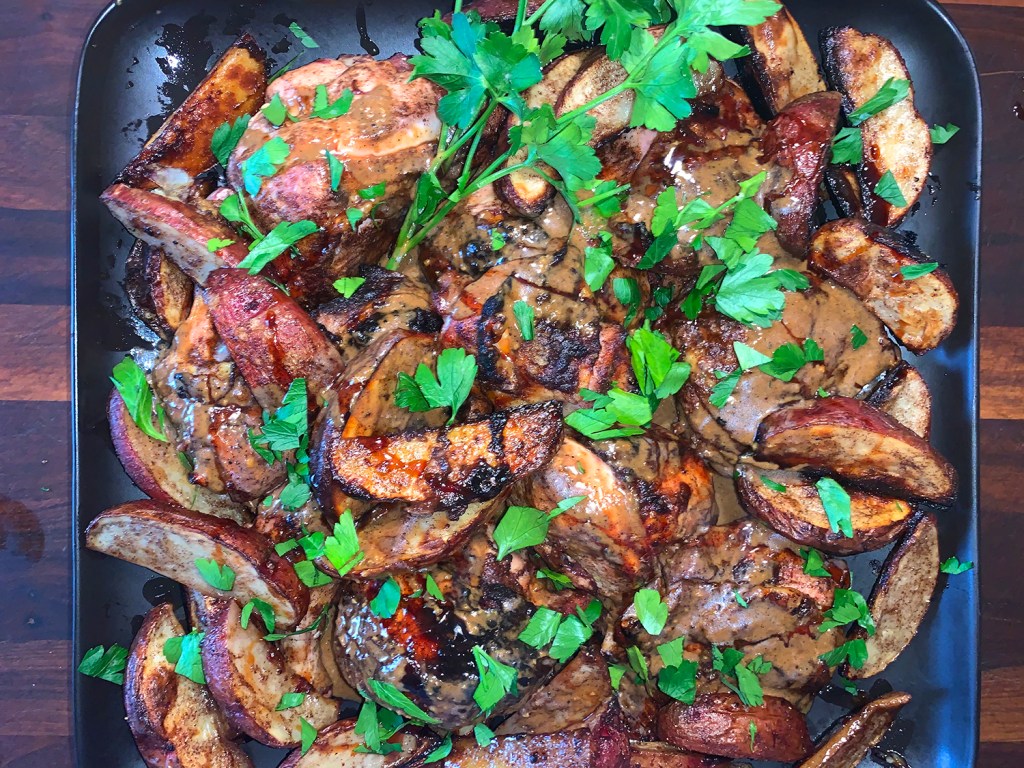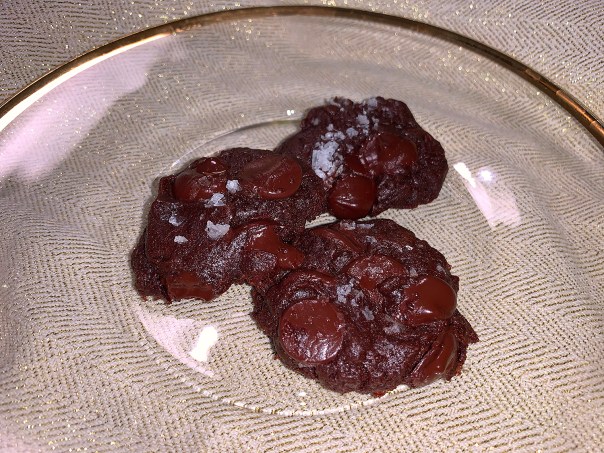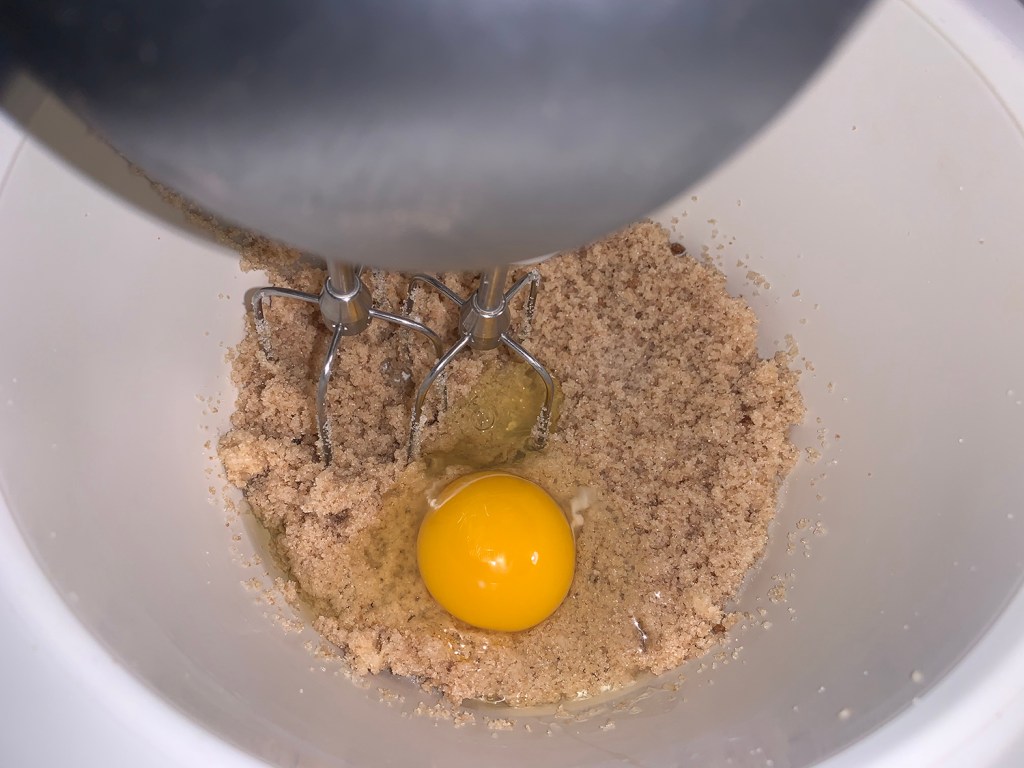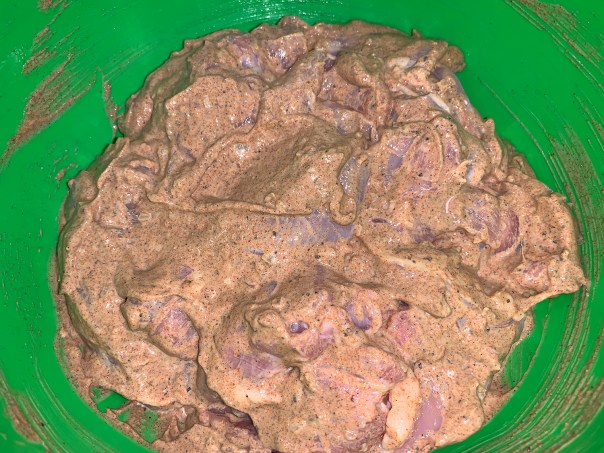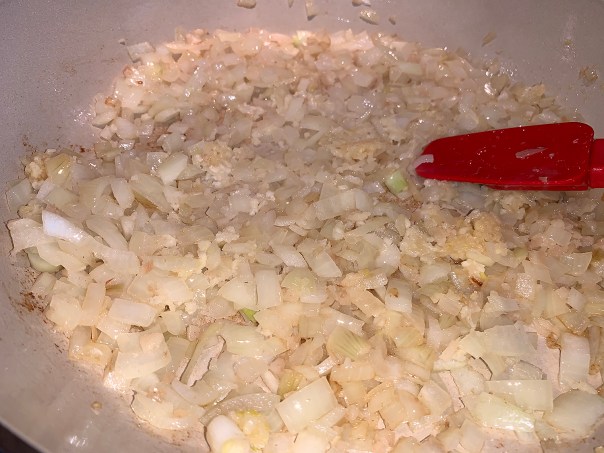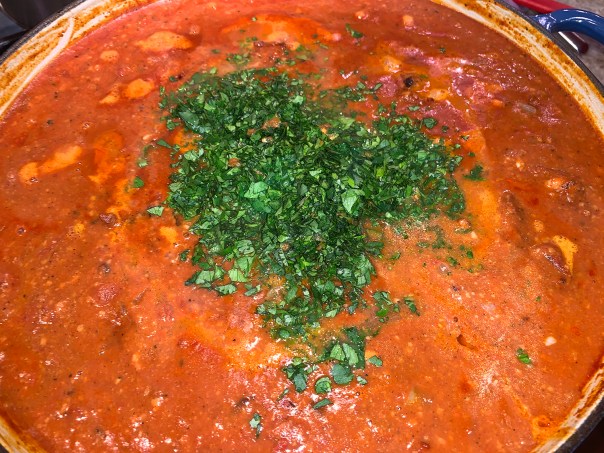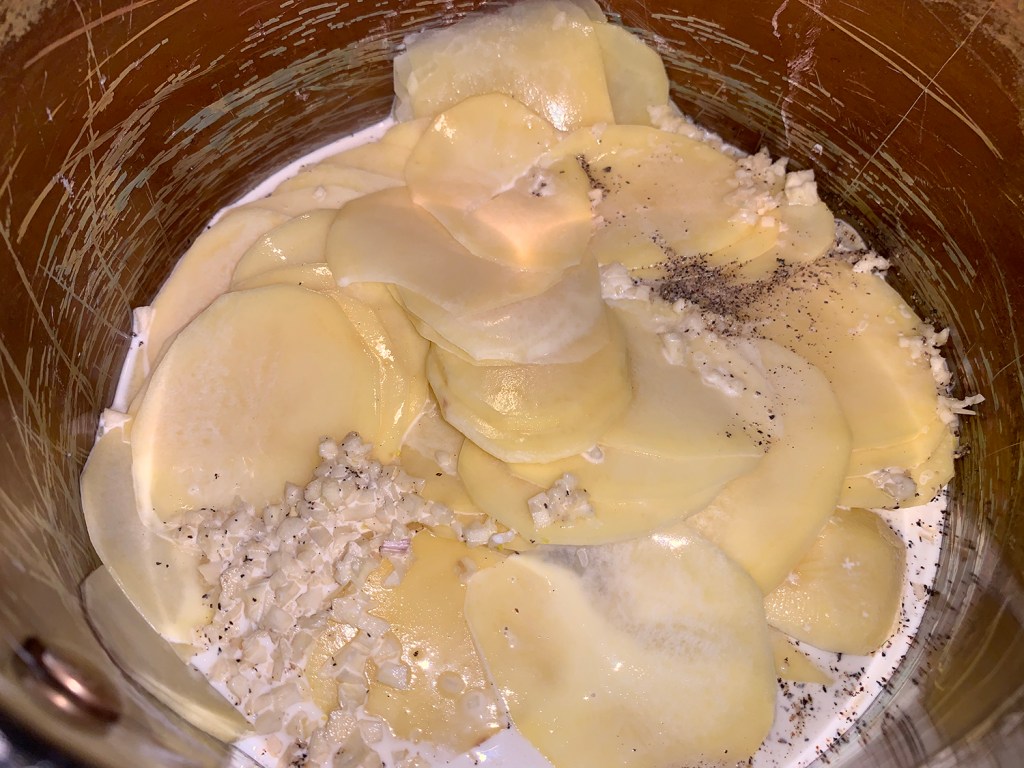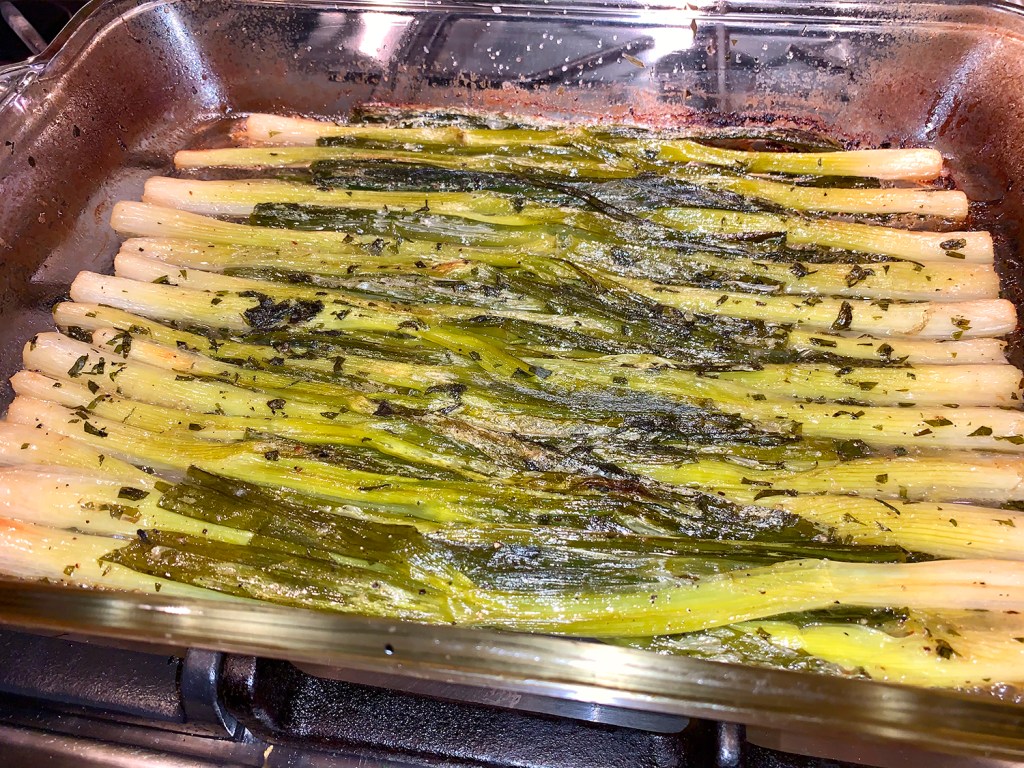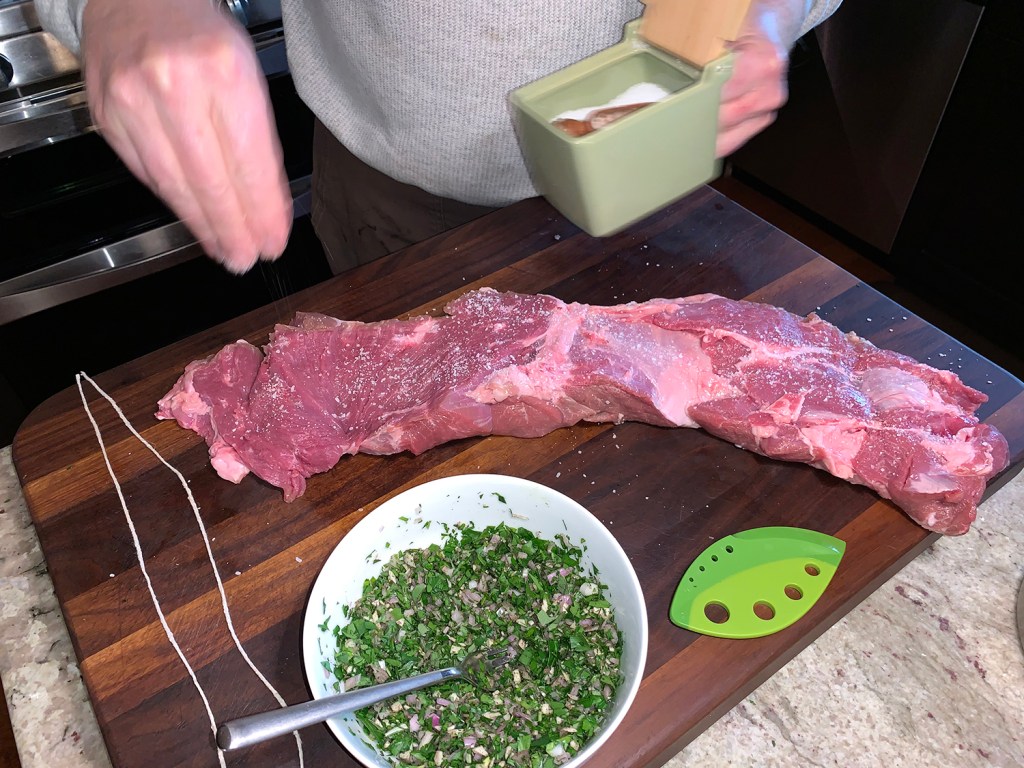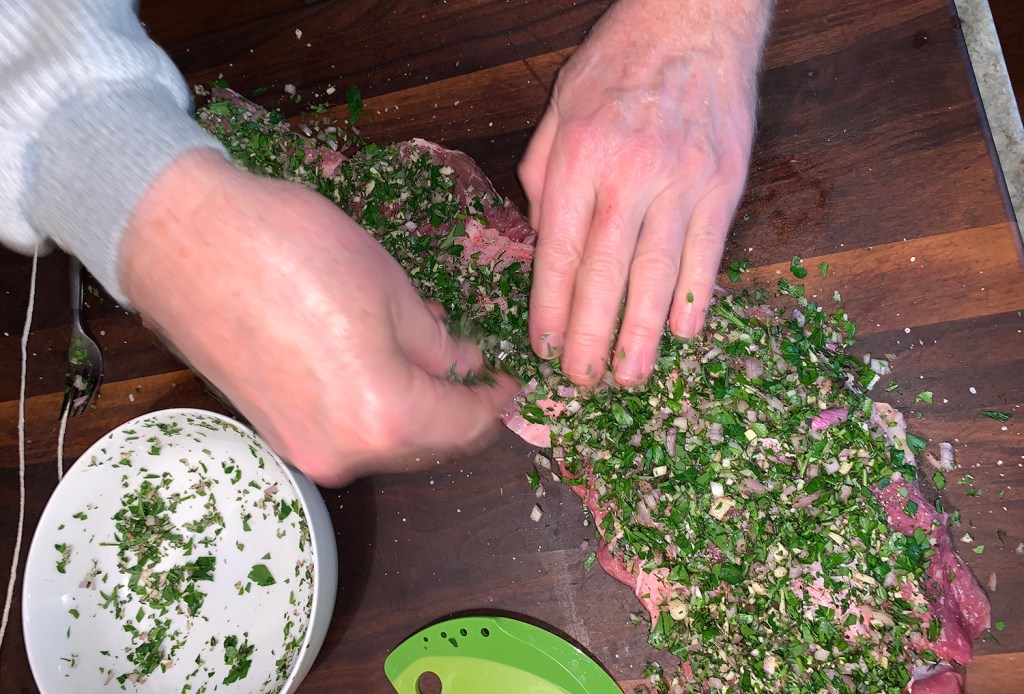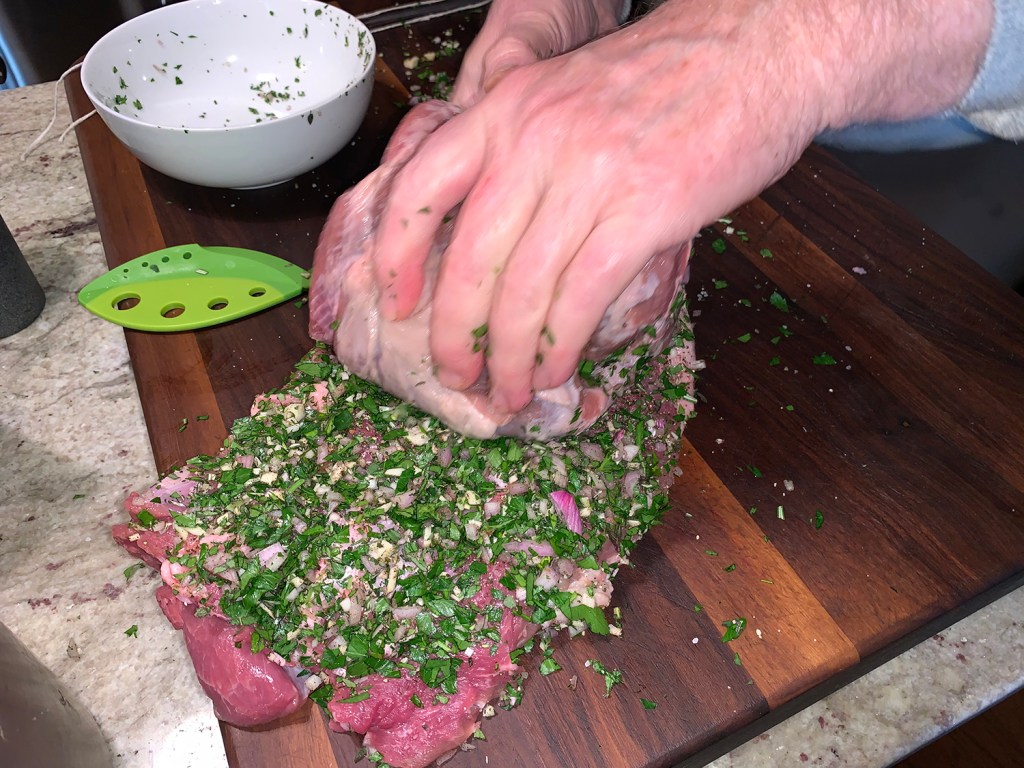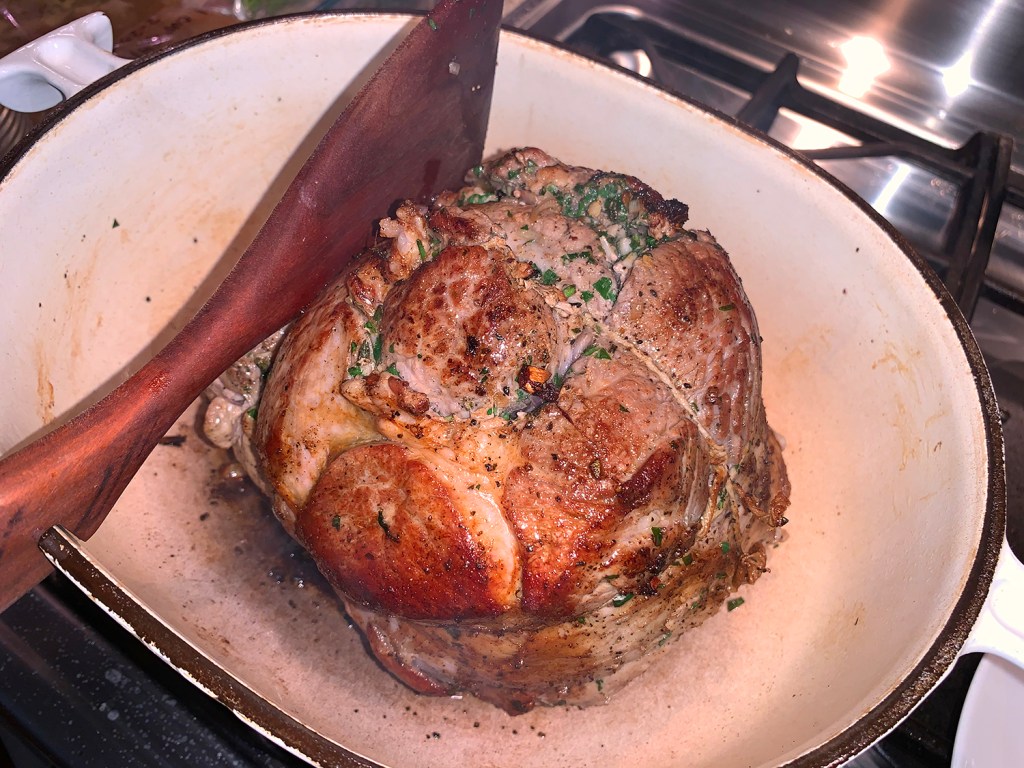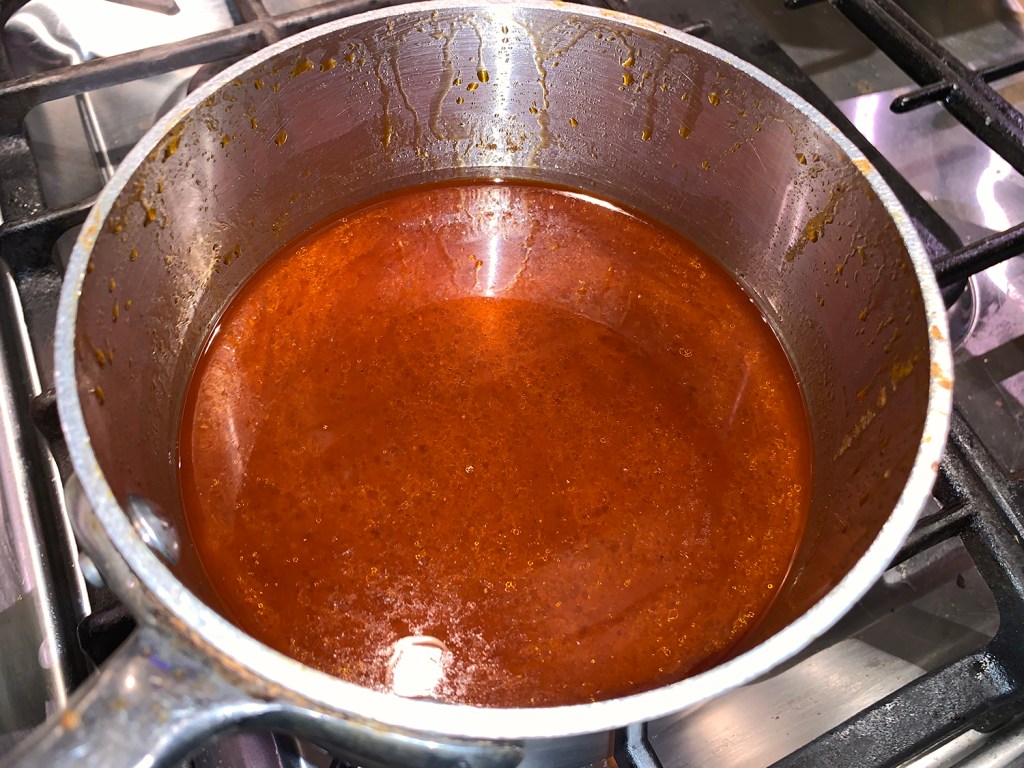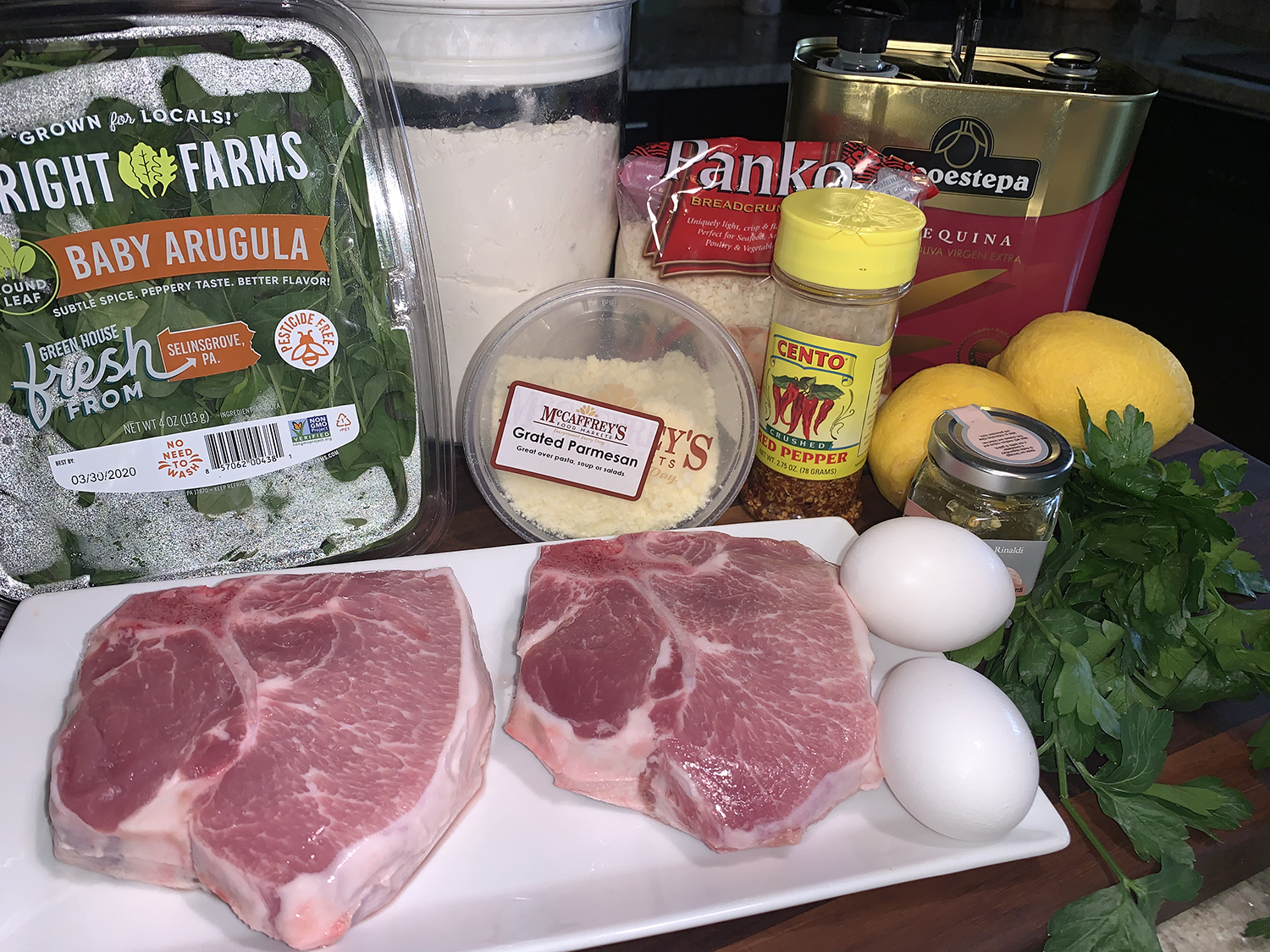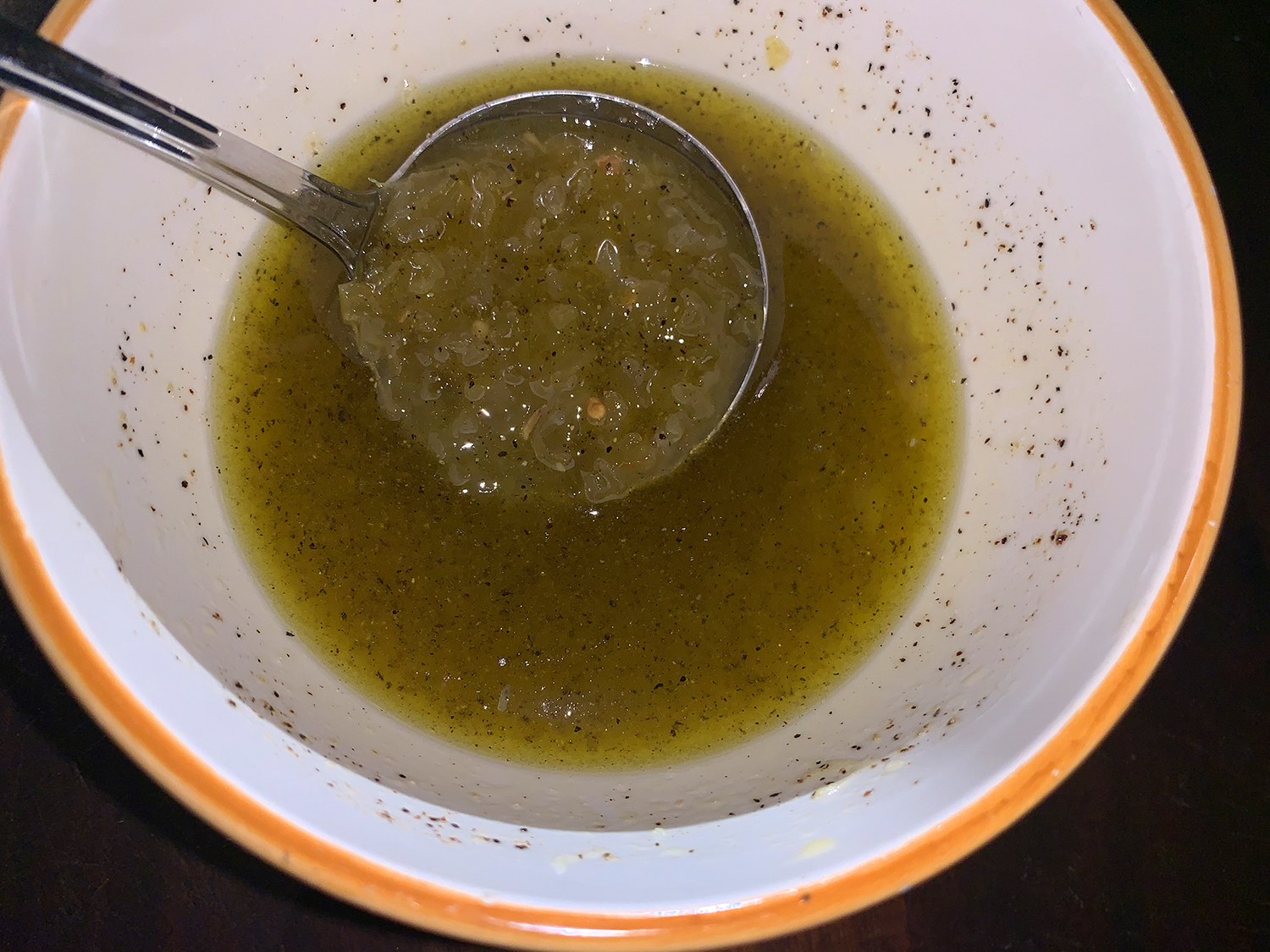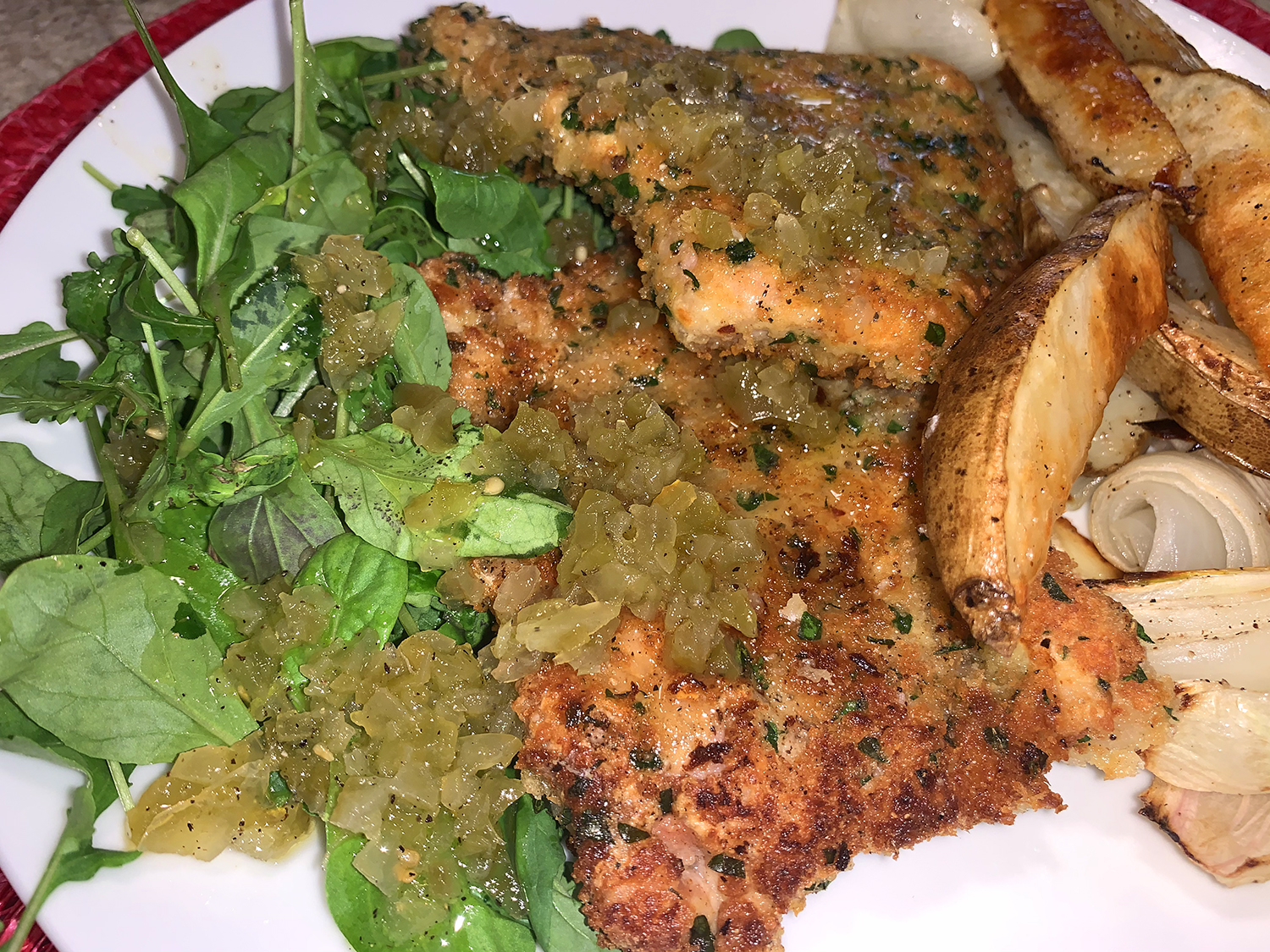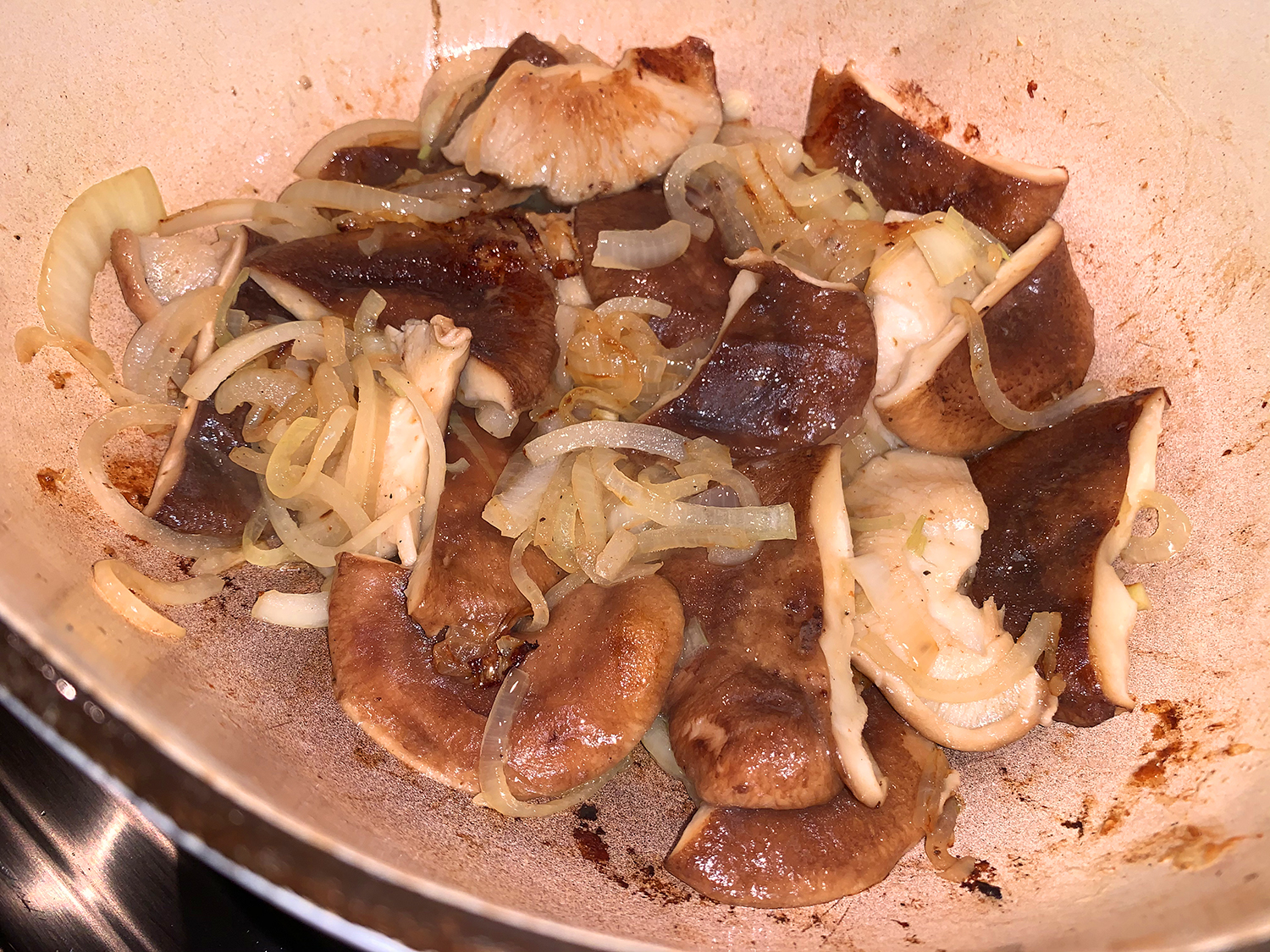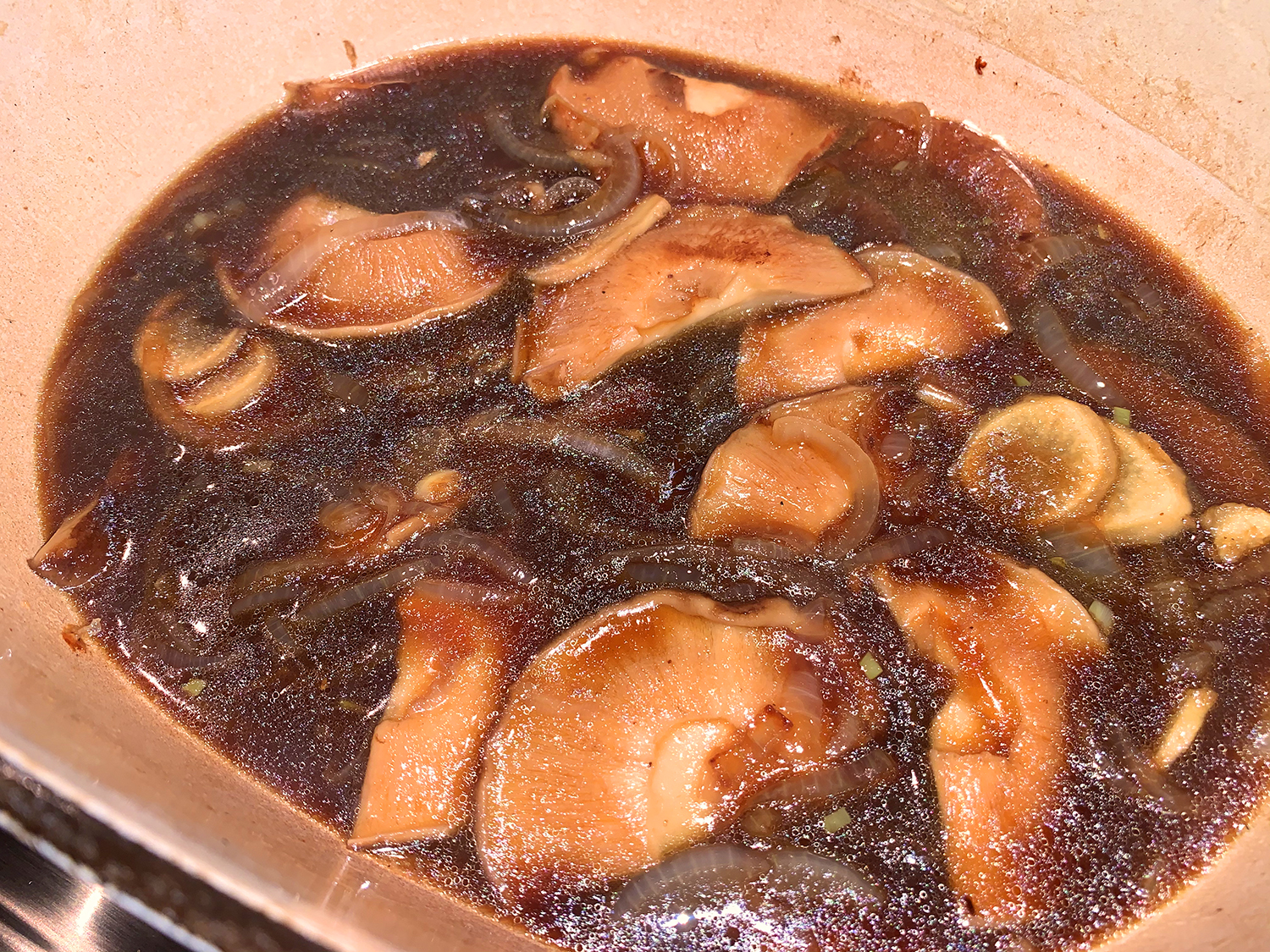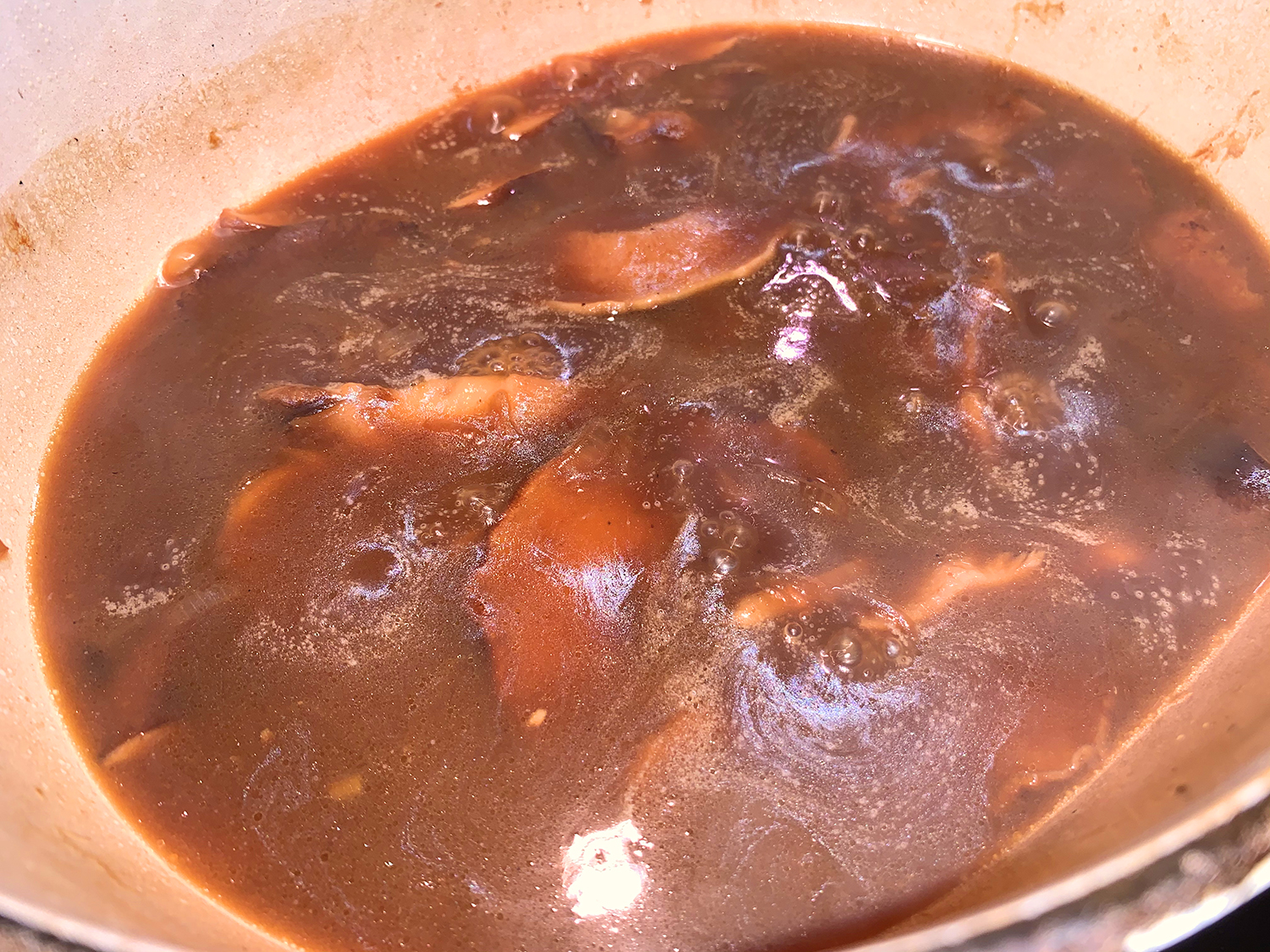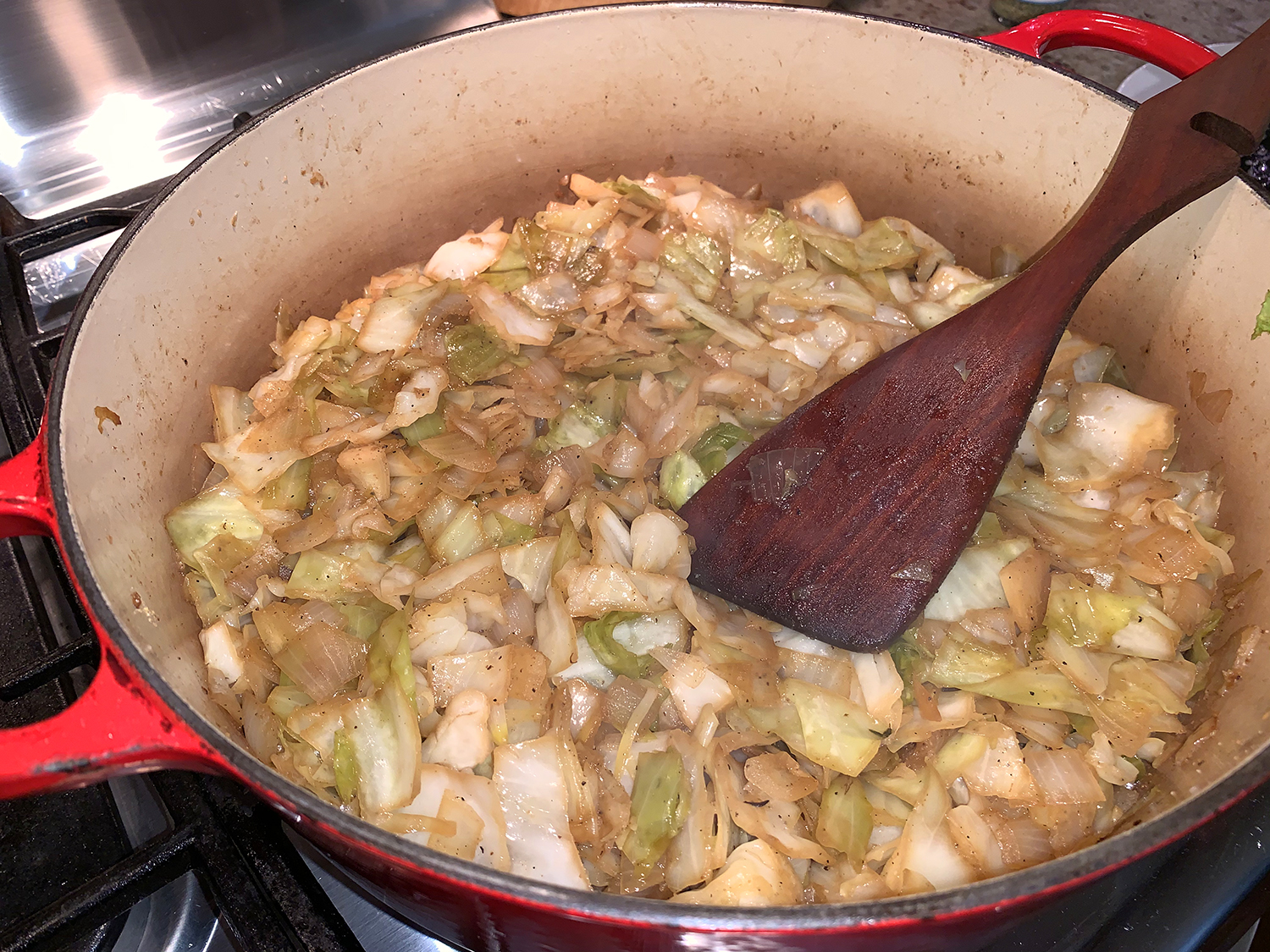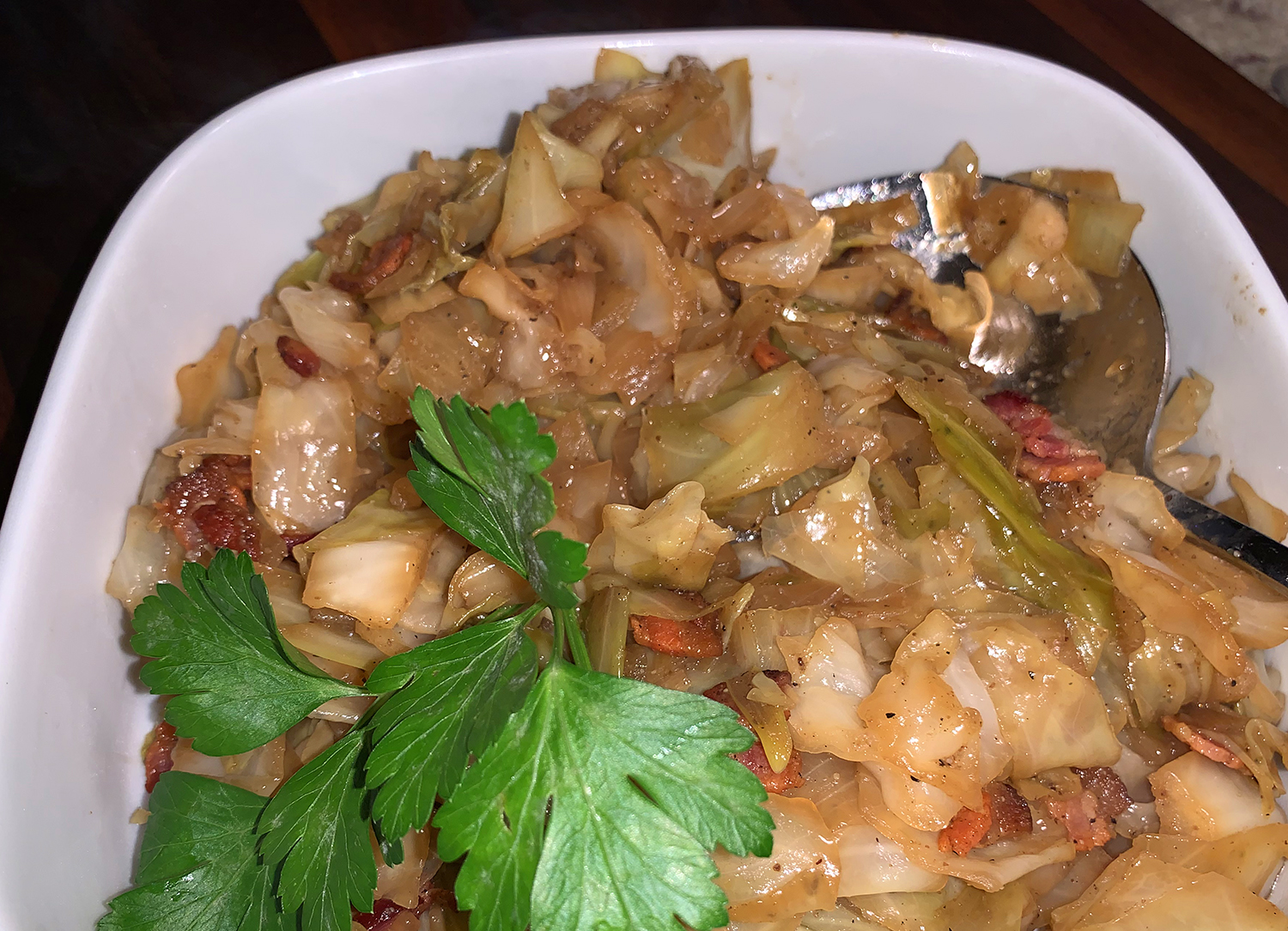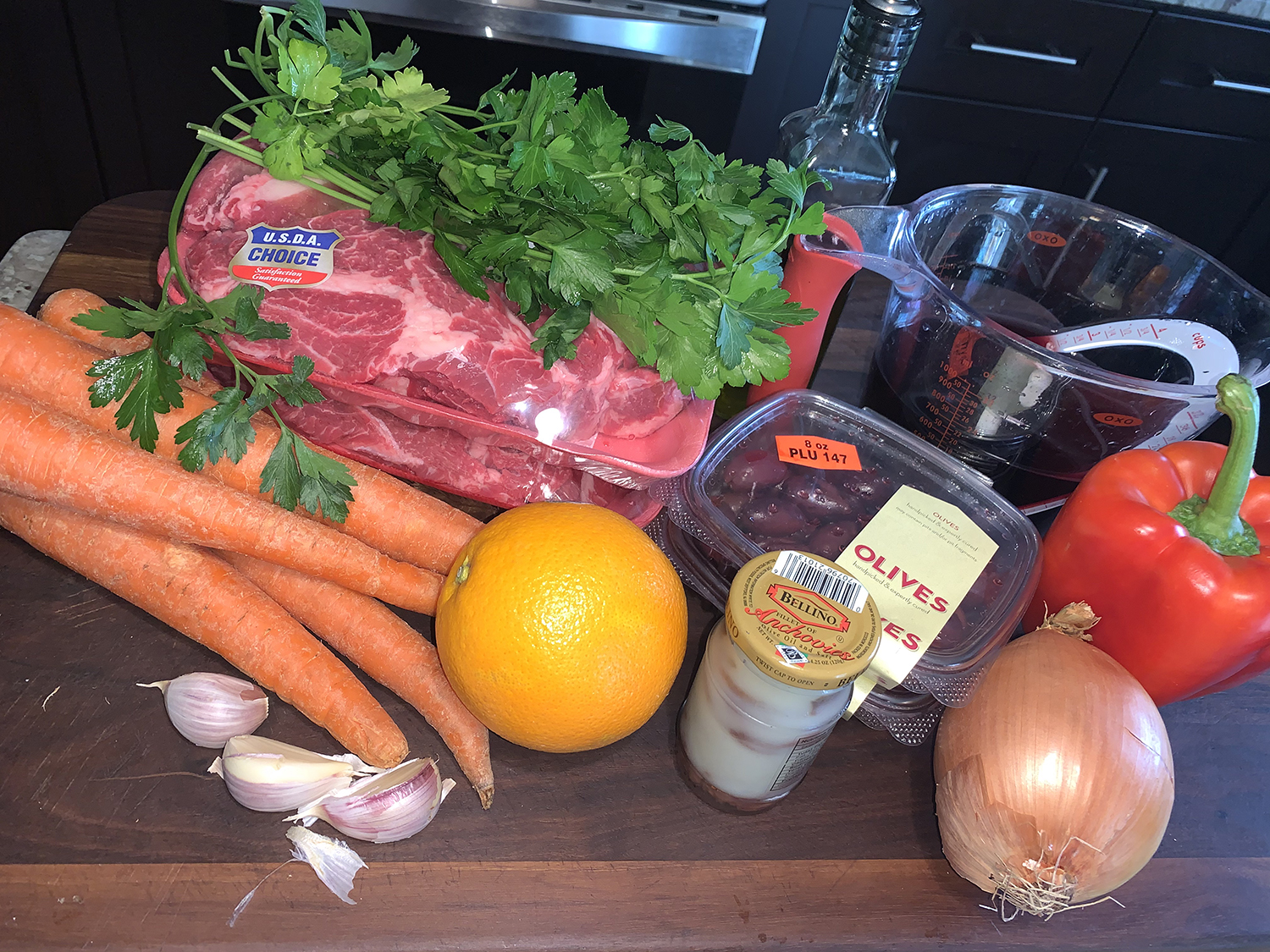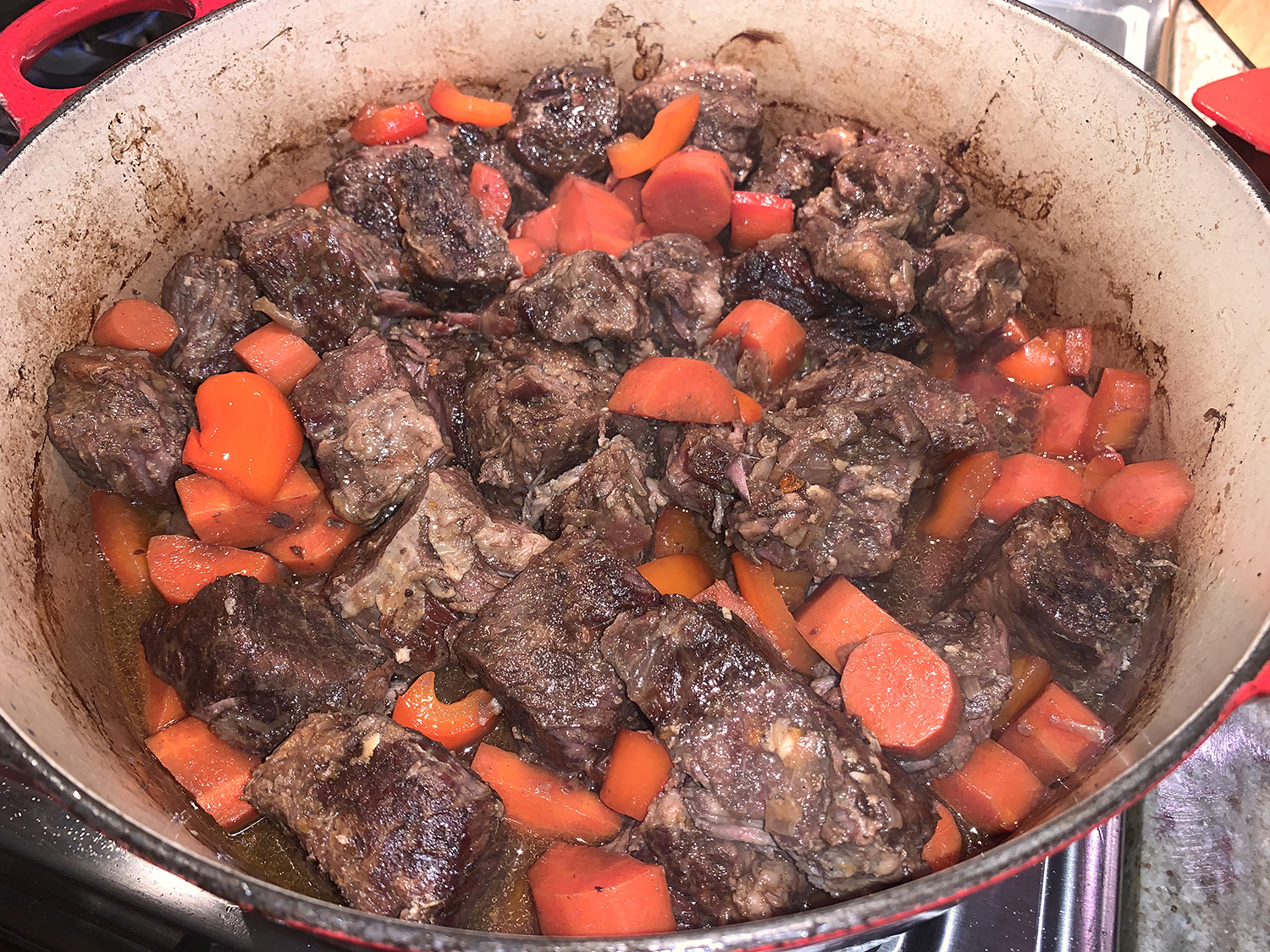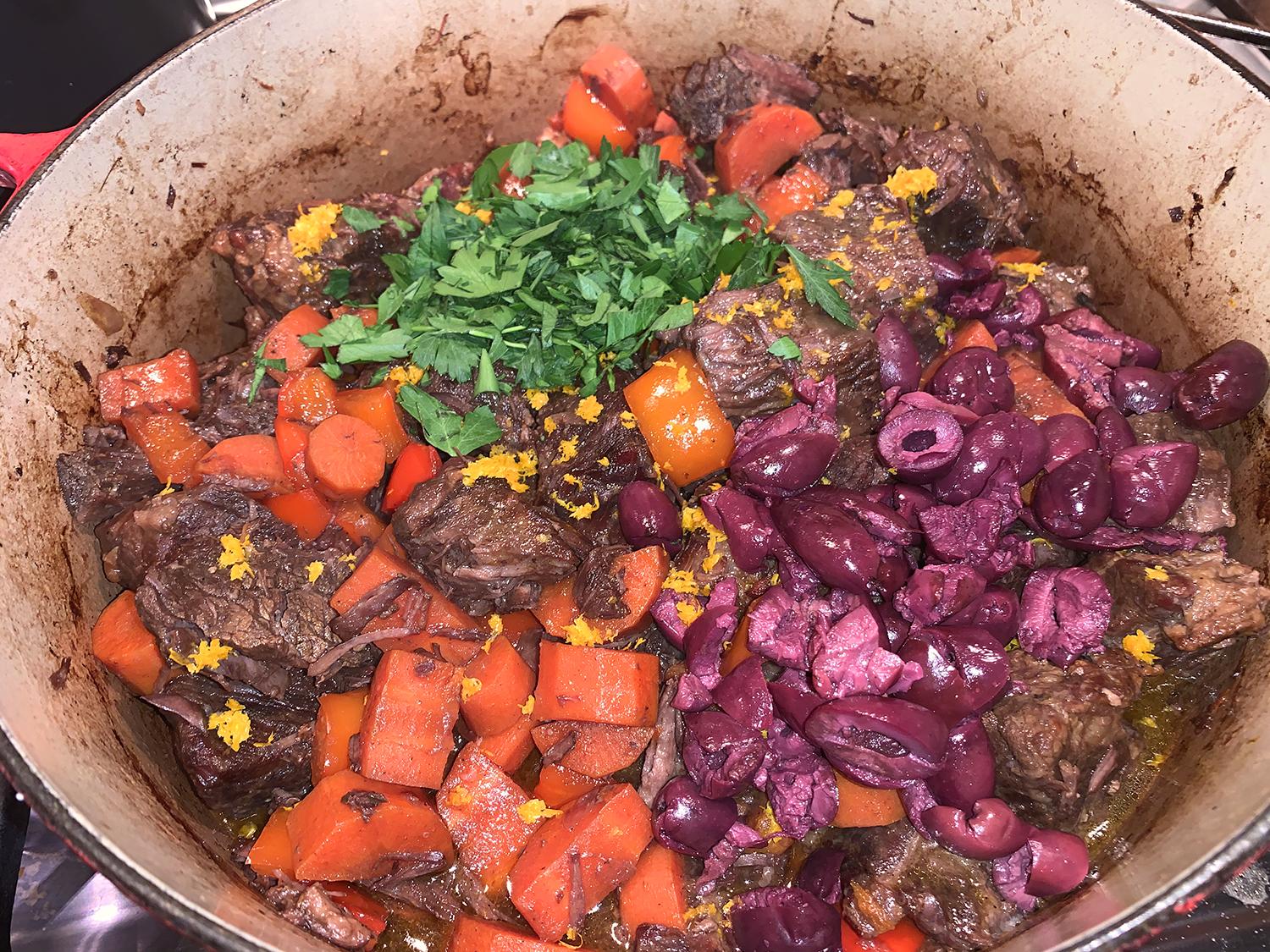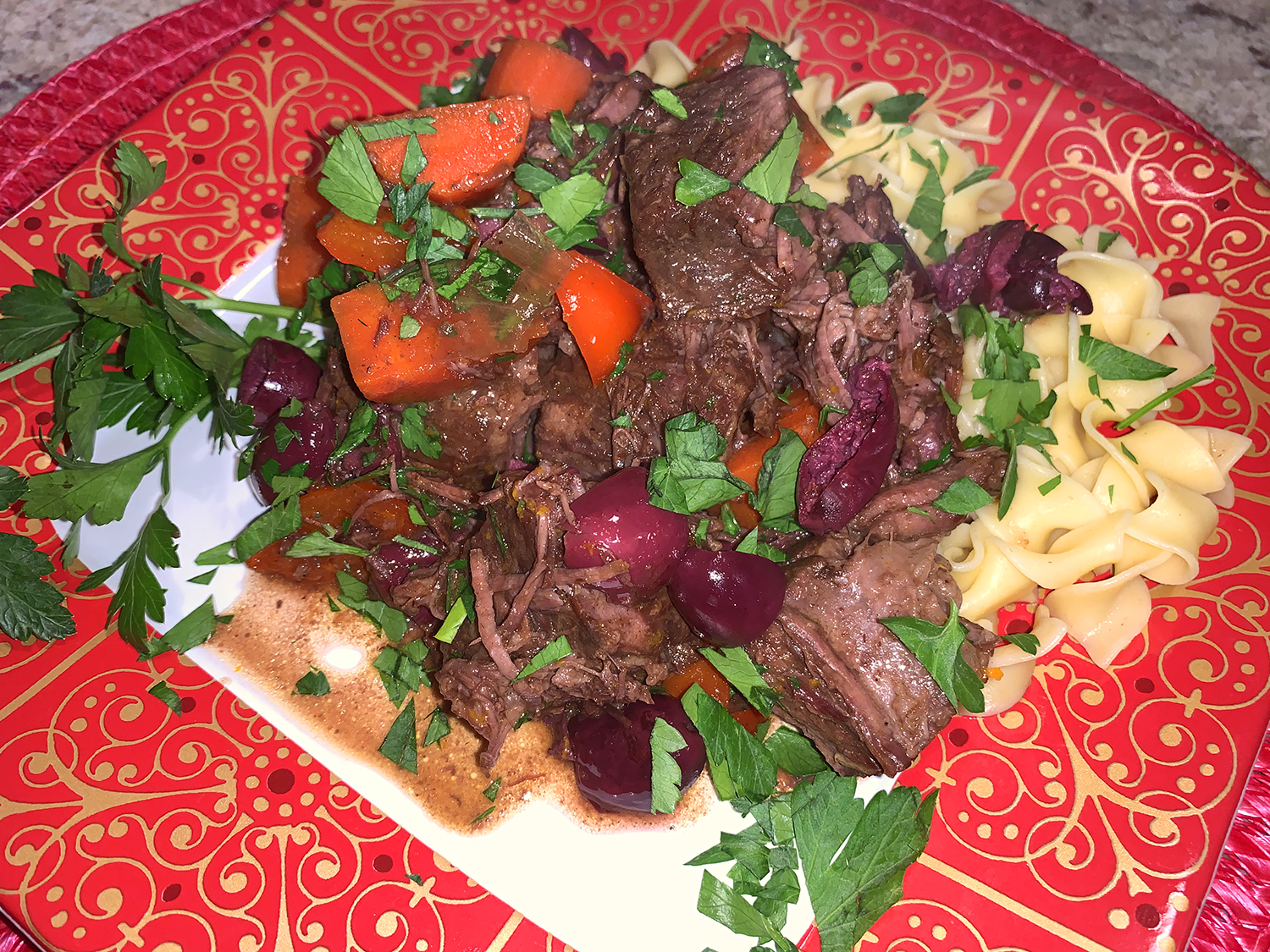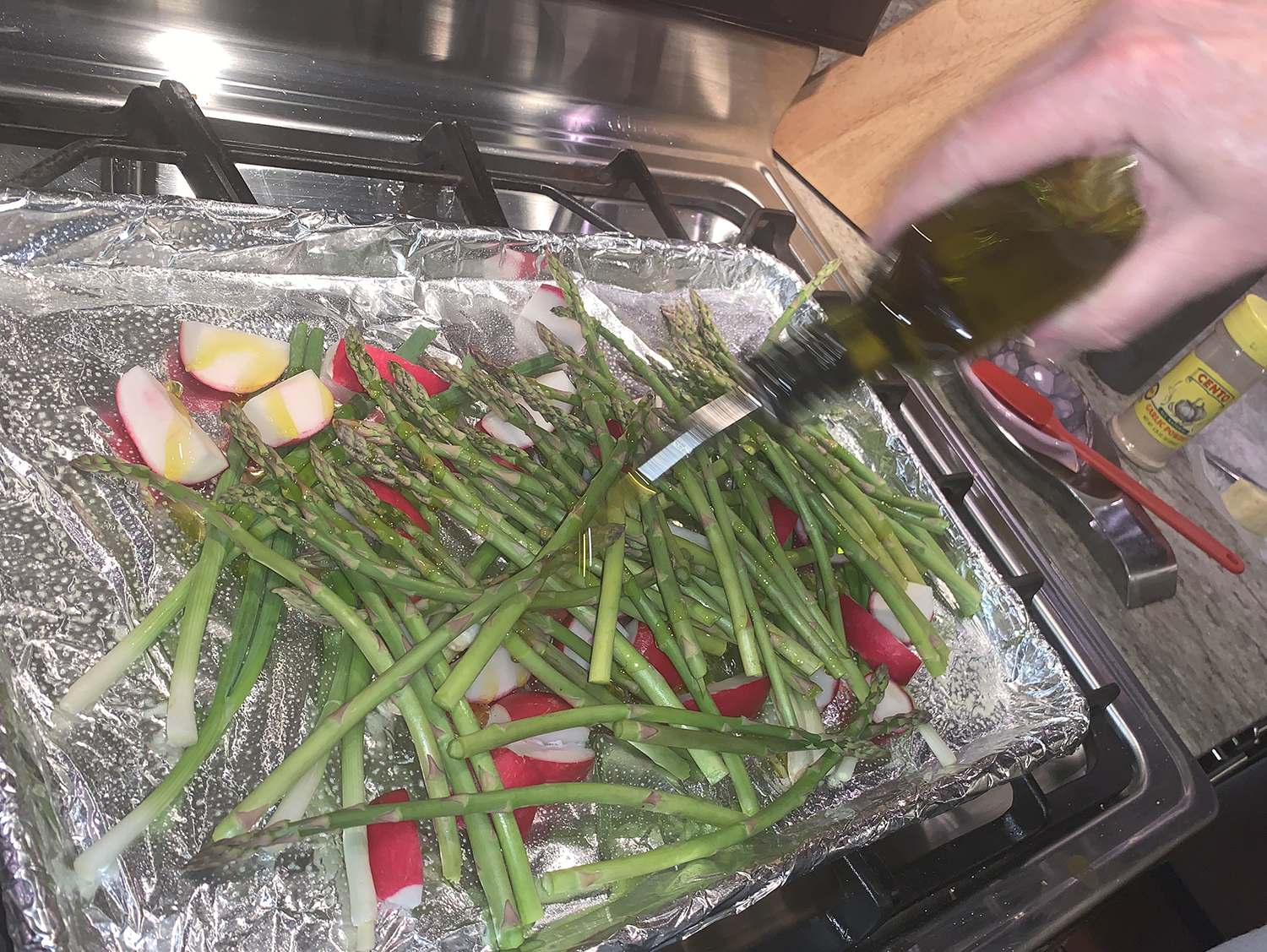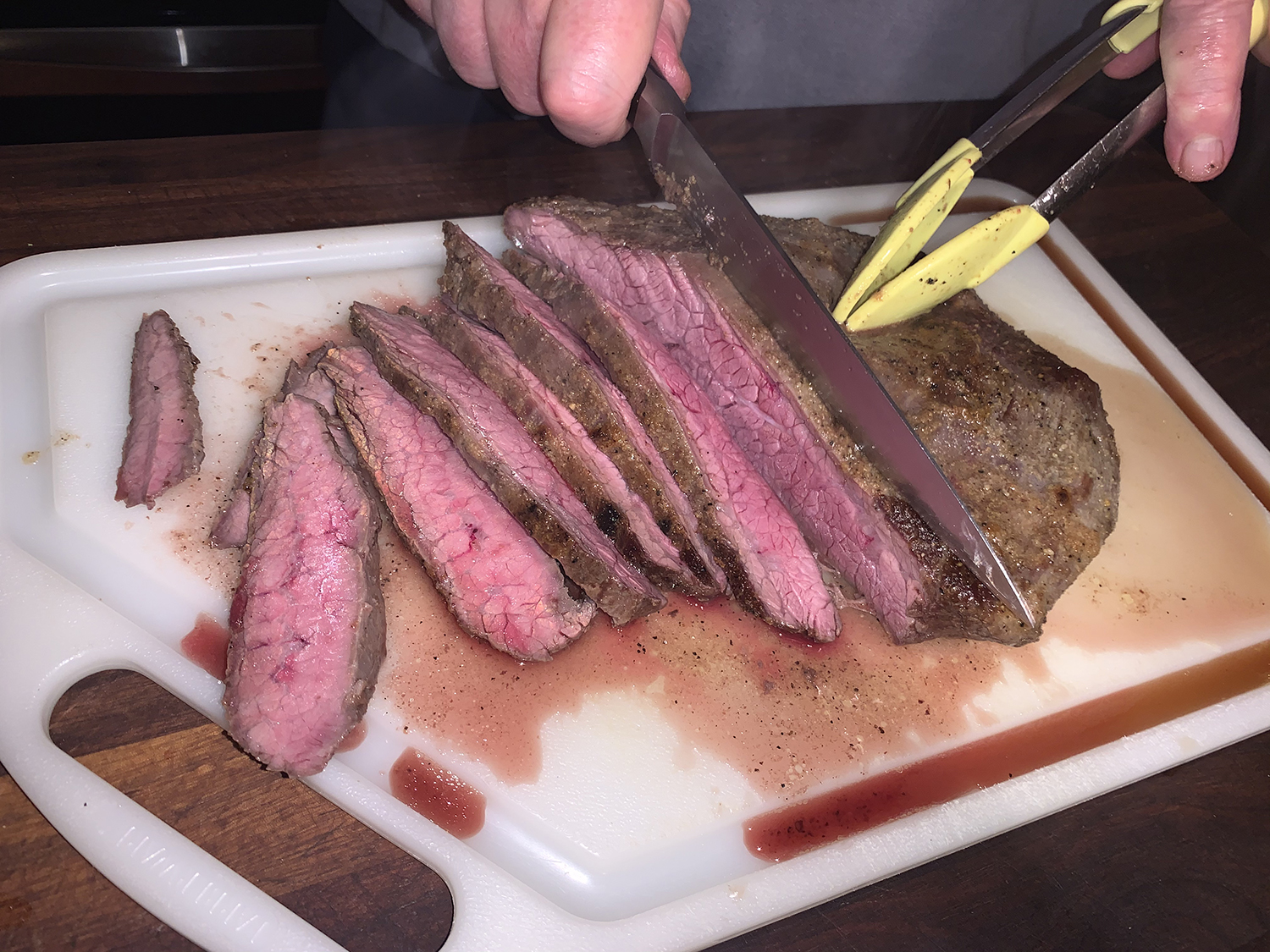This Palestinian Upside-Down Chicken and Rice (Maqlubeh) was hands-down delicious! Typically a fan of white meat, if I do eat poultry dark meat, it’s usually the skinless, boneless thigh variety. Well this recipe uses thighs with the bones and skins intact, and was probably the best chicken thighs I’ve had in recent memory. Oh and that rice!!
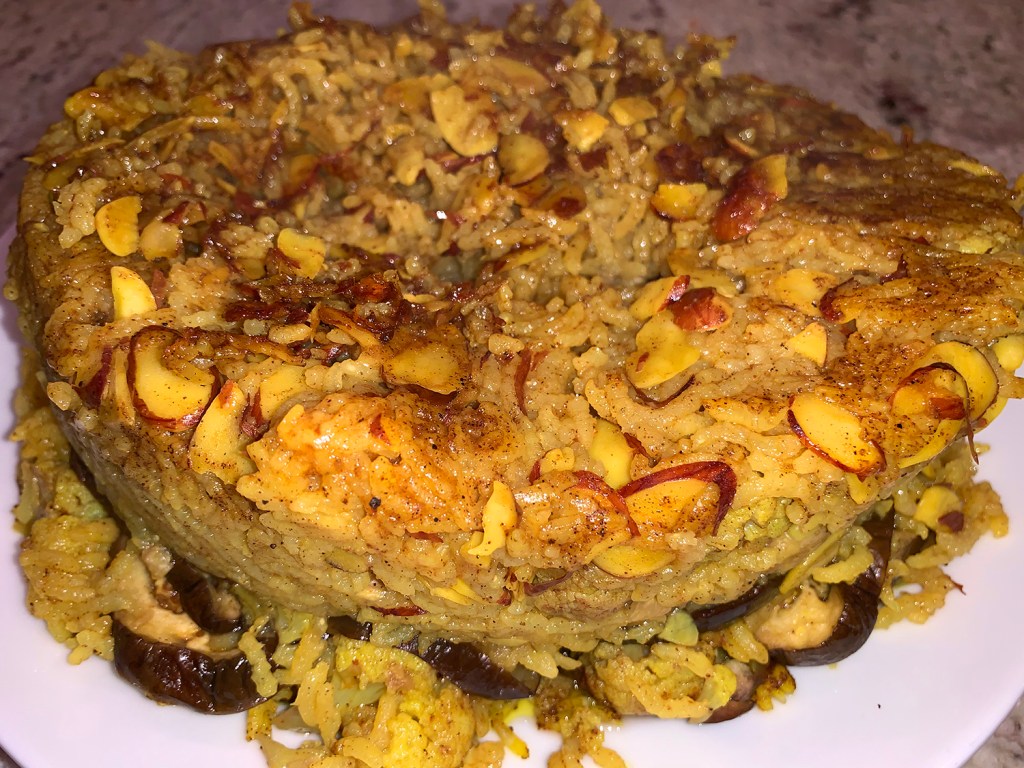
We decided (regrettably now) to make only half a recipe. What’s interesting about this however is the amount of poultry. 50% of 1 1/2 pounds of chicken would be 3/4 pounds right? Well, that equated to about 2 thighs, so I incorporated 4 pieces weighing in at over 1 pound, just enough for the two of us, but with lots of the rice mixture leftover (not that that was a bad thing).
Of course, a ton of flavor came from our homemade chicken stock; and the fact that I still used the full amount of garlic, because that’s just how we roll. The eggplant and cauliflower practically melt into the rice resulting in one harmonious mouthful!
Maqlubeh translates from the Arabic as “upside down,” which describes how this traditional multilayered rice dish is served. Though this streamlined recipe still requires a small investment in ingredients and prep, the work mostly is front-loaded and produces a one-pot dish impressive enough for a special occasion.
For proper cooking, it’s important to use a pot 9½ to 11 inches in diameter and 4 to 6 inches deep—which became another interesting dilemma for us. We were reducing the recipe by half in which case the author indicates to use a 6-7″ wide by 4 ” deep pot. Our pot of choice was 8″ wide (but we included more chicken, remember?), yet the handles rose higher than the sides of the pan which made inverting the mixture onto a platter at the end a little challenging to say the least.
Maqlubeh
After searing and removing the chicken, you are instructed to line the bottom of the pot with a parchment round to guarantee that the rice forms a crisp, browned bottom layer, and does not stick when the pot is inverted for serving. Truth be told, as many other reviewers reported, our rice did not form a crisp, browned bottom layer. Can’t say I was too upset over that fact. I did garnish with a sprinkle of slivered almonds which provided a crunch factor.
The classic accompaniment for maqlubeh is a tomato, cucumber and yogurt salad.
Palestinian Upside-Down Chicken and Rice
Ingredients
- 2 Cups basmati rice
- Kosher salt and ground black pepper
- 1½ Lbs. bone-in, skin-on chicken thighs, trimmed
- 4 Tbsp. extra-virgin olive oil, divided
- ⅓ Cup slivered almonds
- 8 Oz. cauliflower florets (1-inch pieces)
- 8 Medium garlic cloves, chopped
- 4 Tbsp. (½ stick) salted butter, melted
- 4 tsp. ground cumin
- 1 Tbsp. ground allspice
- 2 tsp. ground turmeric
- 1 tsp. grated nutmeg
- ½ Medium eggplant (about 8 ounces), sliced into ¼-inch-thick rounds
- 1 Qt. low-sodium chicken broth
Directions
- In a large bowl, combine the rice and 2 tablespoons salt. Add water to cover by 1 inch, then set aside. Have ready a lidded pot that measures 9½ to 11 inches in diameter and 4 to 6 inches deep. Cut 2 rounds of kitchen parchment the size of the pot.
- Season the chicken all over with salt and pepper. Set the pot over medium and heat 1 tablespoon of the oil until shimmering. Add the chicken skin down and cook until browned, about 10 minutes. Transfer to a plate and set aside. Remove the pot from heat. Place 1 parchment round on the bottom, then turn to coat it with fat.
- Add the remaining 3 tablespoons oil to the parchment-lined pot, then sprinkle evenly with the almonds. Drain the rice in a fine mesh strainer, then rinse under cool running water and drain again.
- Scatter 1 cup of the rice in a thin, even layer over the almonds. In a medium bowl, mix together the remaining rice with the cauliflower, garlic, butter, cumin, allspice, turmeric, nutmeg and 1¾ teaspoons each salt and pepper.
- Reserve ½ cup of this mixture, then distribute the remainder in an even layer in the pot.
- Place the chicken in the pot, slightly nestling the pieces into the rice-cauliflower layer; discard any accumulated juices. Shingle the eggplant slices over the chicken in an even layer. Sprinkle with the reserved ½ cup rice mixture.
- Pour the broth into the pot (it will not fully cover the eggplant), then bring to a boil over medium-high. Set the second parchment round over the food, then cover the pot with the lid. Cook for 5 minutes, reduce to low and cook, undisturbed, for 35 minutes.
- Remove the pot from the heat, uncover and let stand for 15 minutes. Remove the parchment, then invert a serving platter onto the pot.
- Holding the platter against the pot, carefully invert the two together; leave the pot overturned on the platter and let rest for about 10 minutes. Slowly lift off the pot and, if needed, remove and discard the parchment.
Tip: Don’t forget to soak and rinse the rice. This helps the grains cook up light and separate.

Adapted from a recipe by Courtney Hill from Milk Street

